expireddavid3808 posted May 22, 2021 08:19 PM
Item 1 of 5
Item 1 of 5
expireddavid3808 posted May 22, 2021 08:19 PM
DuctlessAire 12 Seer 12000 BTU 220V 1-Ton Ductless Mini Split Air Conditioner
+ Free Shipping$779
Home Depot
Visit Home DepotGood Deal
Bad Deal
Save
Share
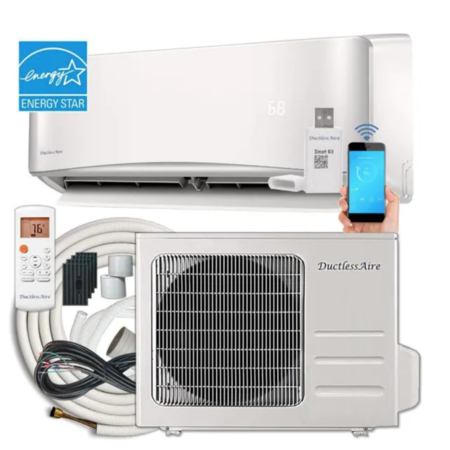
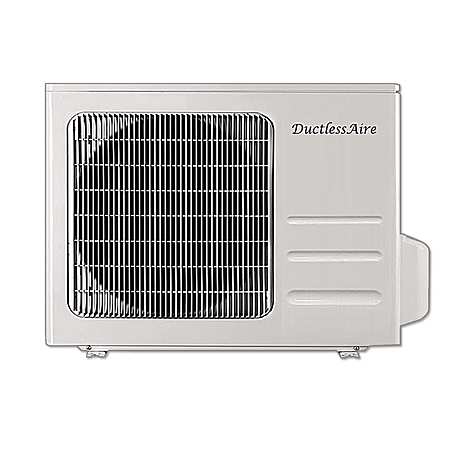
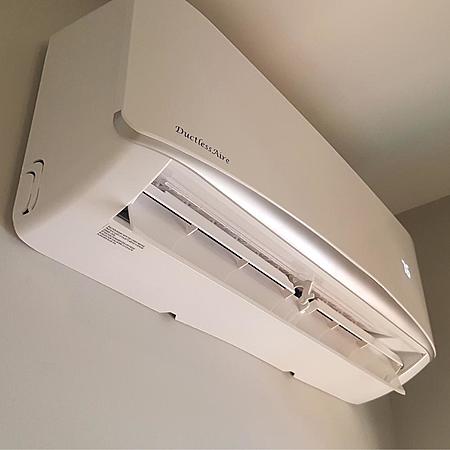
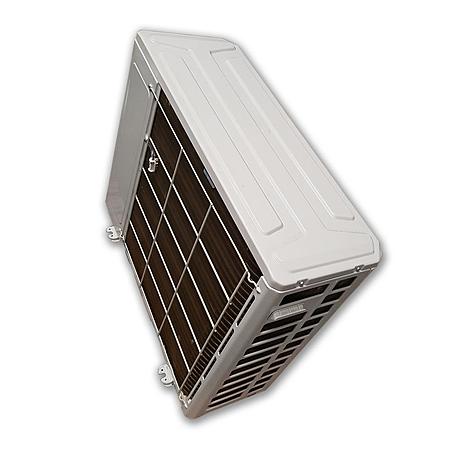
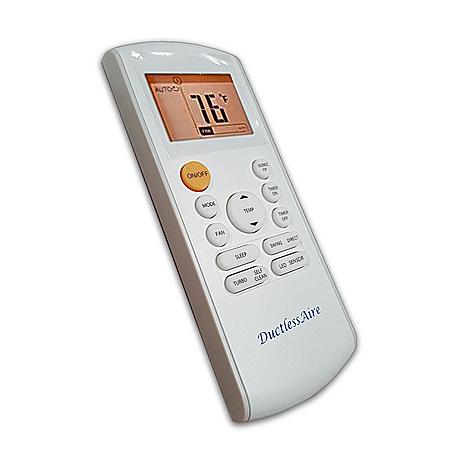

Leave a Comment
Top Comments
This works if you're handy since you'll probably do a better job. Doing things like a nitrogen pressure test, which aren't stated in the manual, is a good practice that many installers will skip unless it's explicitly stated in the manual like in some Mitsubishi units. This practice makes sense for heat pump R410A units which will see upwards of 450 psi on the head when in heat pump mode. But expect to spend $500-$700 on tools if you want to do it right.
Edit: if you want me to comment more on the tools I went with, let me know.
Edit Edit: As promised, I posted my tools breakdown reply on #99 of this thread, but I'm also going to post it below too. If this angers the mods then please remove post #99.
Everyone can decide what you need for your install versus others, but here's the tools that I bought for mine:
Nitrogen Tank w/ Regulator (got on Craigslist)1 $ 100.00
Appion CTEE14 MegaSeal Low-Loss Charging T-Fitting - 1/4'1 $ 49.94
Appion MGAVCR Mega Flow Vacuum Rated Valve Core Removal Tool – 5/16" System Connection1 $ 48.48
CPS VG200: Vacuum Micron Gauge with Digital LCD Display1 $ 146.21
Refrigeration Technologies RT201B Nylog Gasket/Thread Sealant1 $ 10.25
Yellow Jacket 42004 Series 41 Manifold with 3-1/8" Gauge, psi, R-22/404A/410A1 $ 112.29
Yellow Jacket 19173 R-410 5/16" to 1/4" coupler w/ schrader valve.1 $ 14.26
CPS Pro-Set R410A Flare Gauge1 $ 19.81
CPS BLACKMAX BFT850 Ultra-Lightweight R-410A Clutch-Type Ecentric Flaring Tool1 $ 130.03
Reed Tool DEBO Pencil Shape Deburring Tool for Copper1$11.68
RIDGID 32975 Model 103 Close Quarters Tubing Cutter, 1/8-inch to 5/8-inch Tube Cutter , Silver , Small1$12.67
Johnsen's 6915 Vacuum Pump Oil - 12 oz.1 $ 9.79
PITTSBURGH AUTOMOTIVE 3 CFM Two Stage Vacuum Pump1 $ 149.99
PITTSBURGH 3/8 In. Metric Crowfoot Wrench Set, 7 Pc.1 $ 9.99
For mine, it was a total of $825-ish, with it being more like $900 after tax. But I bought multiple things that most people don't need to buy, marked in italics, so you can save a lot of money skipping these. These optional tools represent an additional $372.61 ($400.55 after tax, at least where I live) you can eliminate about 50% from the tools budget.
First and foremost, don't attempt to work with electrical or HVAC unless you're pretty comfortable with DIY projects.
The Nitrogen tank is optional for pressure testing. Some say if you can pull a good vacuum and let it sit for a while that is "good enough" and most company's instructions exclude this from the installation instructions. But it's worth considering because when running R-410A in heat pump mode, you'll get high pressure across your head side of the loop. This makes sense because the high-pressure side = heat. So in my head it made sense you'd want to do a pressurization test and a vacuum down test, since one is pushing apart the fittings (pressure) and the other is sucking them together (vacuum). Since the fittings will all be exposed to both types of pressures it makes sense for me. Follow Dakine or Mitsubishi installation manual instructions for nitrogen pressure testing if you opt to do it. Note that most professional installers WILL SKIP THIS unless it's a unit that requires it (think Mitsubishi) and the installer is one of their "diamond" approved installers or whatever.
Secondly, I bought a flaring tool because I had a 2-head system and cut the tubing to fit the installation and make it more tidy. This is optional and I do not recommend it unless you know what you're doing. It also saves money to skip this. Before cutting, you need to make sure your run or runs have the required length to prevent overcharging the system. If you have a single head unit and end up cutting the tubes to 1/2 the length you may have too much refrigerant in the linesets. Refer to your manual or talk to the company before you decide to do this. And if you decide to do it anyways, yes it must be a HVAC specific flaring tool. Get one with the clutch system to prevent overtightening the flare press and make it foolproof. R-410A runs at too high of pressures to get away with subpar flares. Deciding to just accept the standard length of the copper tubing eliminates the costs associated with the Flaring tool, flaring gauge, deburring tool, and pipe cutting tool.
As for the rest, you do not NEED a digital micron gauge, many just use their normal gauge set's low pressure side gage and watch to see if the needle moves. This will also work. Again I wanted to go with professional duty equipment to get an install I'm 100% confident in. That way if the thing dies in a few years I won't have wonder in the back of my mind whether I screwed up the install. I know 100% my install was perfect. I went with the Yellow Jacket brand gauges, although you could in theory just get the low side gauge, hose, and valve if you're just pulling vacuum and save some money. I'm sure the garden variety chinesium brand gauges are probably perfectly fine for a solo install and will cut the cost in half for them.
The Appion Schrader core removal tool and the t-valve are totally optional too. You'd have to do some youtubing to see how they're used, but here's a great video which shows essentially the same setup I bought: https://www.youtube.com/watch?v=81EeY7S
But you can skip those tools and just use the Yellow Jacket 5/16" to 1/4" adapter and be just fine without them. Your pressure drawdown will just take a bit longer since you're going through the Schrader valve, and you'll loose a tiny bit of refrigerant before the schrader valve closes. Skipping these tools will save you $130-$140.
For the vacuum pump I went with a harbor freight 3CFM rated 2-stage vacuum pump. I believe it's rated for sub-30 microns of vacuum which is great, and a review on their site showed a guy pulling 13 microns if I recall correctly. To put this into perspective most manufacturers suggest pulling below 500 microns before charging the system. This is slightly overkill but it works for me.
Lastly I already have a torque wrench but you can get them dirt cheap from harbor freight, and I bought some crowfoot wrenches to use with my torque wrench to torque the bolts to the manufacturer's specifications. Will it really matter if you don't do it to spec? I don't know but I'm not finding out.
Then beyond all of this you'll have to run some 220-240v and have a disconnect box by your run. If you're not a confident DIY'er don't go for this, but if you are then just watch plenty of videos of installations, follow the instructions, and you'll be fine.
Pros-
No duct work is obvious.
On demand which can save heating/cooling bill.
More precise temperature control "zones".
Cons-
The zones play as double edge sword, when moving in or out the heated/air conditioned space takes some getting used to.
The indoor unit hangs on the wall compare to just a register, so the wall is more or less occupied.
Have to run additional electricity to both in door and outdoor units and the tubes from the indoor unit to the outdoor unit.
More filters to clean.
168 Comments
Sign up for a Slickdeals account to remove this ad.
I also don't think you understand how easy it is to destroy a unit ir the diagnostic criteria that goes into HVAC. More often than not, a tech won't even know the exact cause for defect in a part. And what do you think happens when the part is sent back to the manufacturer? Do you really think they're going to know if it was installed improperly? It's not easy or cheap to tear apart a compressor. They'll know why it doesn't work, but they'll probably won't be able to figure out what caused the malfunction.
Not sure why people keep bringing this stuff up. It's not like any of this warranty stuff is new. It was in place before, and hasn't changed since the Act was passed 45 yrs ago. Do people really think these companies have blatantly been violating the Act for almost a half a century with no one catching on? Come-on, think about.
From Magnuson-Moss:
I do have some familiarity with the causes of failures in HVAC systems and what happens when parts are sent back to the manufacturer under warranty. One of the most interesting things about returned compressors is that a large percentage of them aren't actually defective [compressorsunlimited.com]. These are presumably professional licensed contractors who return perfectly good compressors about a third of the time. Magnuson-Moss aside, I think it's unfortunate that a manufacturer is willing to deal with a licensed jackleg who can't even tell if a compressor is good or bad on warranties but not the end user who is the person who actually owns and uses the equipment. But 99% of consumers don't care, so I'm sure that's the way it will stay.
Manufacturers do tend to inspect expensive components like compressors that are returned more often than you might think. The likelihood is fairly high that they will tear down a compressor that is replaced more than once from the same piece of equipment under warranty. The likelihood of two compressors failing in the same piece of equipment from a manufacturing defect in the compressor is less than a person's likelihood of getting struck by lightning. If they can ascertain the failure was not caused by a manufacturing defect, there's a good chance they will refuse to reimburse the contractor. In a lot of cases, they actually can determine why a compressor failed and if it was a manufacturing defect. Different causes of failures leave some pretty telltale signs. This document [mechanicalsupply.com] gives some good examples. I think it's fascinating what can be divined from failed compressors in particular. I liken it to what the NTSB can tell from aircraft wreckage.
Given the way so many companies have openly violated Magnuson-Moss (e.g. the infamous warranty void stickers) for long periods of time, I wouldn't have been all that surprised if these warranties had actually been in violation. I guess the class action lawyers would have shown up by now, though, and made sure everyone got their coupon for $1.99 off their next equipment purchase.
1st, 12k is massive for 300 sq ft (obviously I don't know his load or what he has in there, but a quick manual j for my area puts it at about 2,000 btu's.)
2nd, almost all basements already have a high RH and when you start cooling it it gets worse unless the unit runs long enough to remove it. Short cycling will make it worse.
3rd, this is an INVERTER COMPRESSOR. You might want to read up on them. They ARE designed to run all the time. I couldn't find the exact specs for this unit, so I don't know what the minimum flow is. They also don't specify if they use some type of fuzzy control or a basic delta T. So it is possible that their lowest flow is still fairly high. But nevertheless it's designed to keep running.
https://www.anracelectr
oh looky here: too much HUMIDITY left causes the room to feel clammy when your AC is too big. You claimed there is NO humidity.
https://www.sansone-ac.com/ac-too-big/
hint, focus on VARIABLE SPEED.
You need to go back to ac school.
https://www.homedepot.c
Costco did have great pricing for their 12k DIY unit that runs off of 115VAC for $1099, but those are not currently out of stock.
oh looky here: too much HUMIDITY left causes the room to feel clammy when your AC is too big. You claimed there is NO humidity.
https://www.sansone-ac.com/ac-too-big/
hint, focus on VARIABLE SPEED.
You need to go back to ac school.
Where did I say there wasn't any humidity??? Did you not read my 2nd statement where I said most basements already have high RH and that short cycling can make it worse???
How many manual J's have you done??? If you've done even one you'd know 12K for 300 sq ft is probably grossly oversized. Especially for a basement that typically doesn't have many windows or doors or infiltration. They also generally don't have exposed walls except for the top couple of feet. You would also know that insulation in a basement mostly affects heat loss, not heat gain. But then again, you apparently didn't read my 1st statement where I said I didn't know this guys load, but provided one for my location.
Lastly, learn to do research. Do you even know what variable speed means. First you said they don't always run. Now I'm not sure what you're trying to say. Is it that they do run all the time? or that it will run like a standard A/C cycling on and off, only at a slower speed??? I only ask, because again, you didn't read my 3rd statement. I stated that I couldn't find the exact specs. But apparently you know something that no one else does. So let me ask you this. You say it's variable, so what is it's btu range? Variable inverter compressors can be 2 speed, multi speed, or completely variable. Just looking at one 12k mitsu unit has a btu range of 13.6k to 1.6k. Other units only go down to 65%, some 40%. So unless you know what its range is you have NO idea how this unit will perform. This unit also doesn't list dehumidification levels at anything other than 12K. (hint: TC and SC change as the inverter ramps up and down)
And your absolute right about the compressors. We had one rep tell us that somewhere around 90% of their "failed" compressors were still good. On a good install it's either going to run forever or die fairly quickly. Compressors and capacitors can be finicky; and one guy I worked with would replace any unit that didn't run without first trying another capacitor. After he learned that a "good" capacitor isn't always good his replacement rate completely dropped.
Sign up for a Slickdeals account to remove this ad.
2 outdoor units: MXZ-2C20NA2 and MXZ-3C24NA2
5 indoor units: 4 of GL09NA and 1 of GL12NA
Everything was installed in one day by 3 people.
Another company with similar Fujitsu units quoted us $9800 for everything.
These ductless are so much quieter than the window AC we had used the past years. Should also save lots in electrical bill this summer.
Don't get the DIY mrcool confused with the advantage or other models.
The conventional method if you wanted to extend it is call someone or add refrigerant yourself based on the additional lineset length, otherwise it won't cool/heat as much since it doesn't have the correct amount of refrigerant flowing around.
Don't get the DIY mrcool confused with the advantage or other models.
The conventional method if you wanted to extend it is call someone or add refrigerant yourself based on the additional lineset length, otherwise it won't cool/heat as much since it doesn't have the correct amount of refrigerant flowing around.
Our garage door faces west, so I painted it white a year ago, and that made a big difference. It is a steel door that I added the insulating panels to. We also insulated the ceiling when the mini split was installed. It is a finished garage, one half is storage and workshop, the other half is where we park our electric car, so that was the reason for having the AC. Water heater, central AC and solar inverter are all in there too, and two of them give off heat.
I questioned whether the 18000 would handle the garage, but they told me it would, and if it didn't, they would upgrade it to the 24000. Two years in, and it has been great.
When we pull the car in after it has been out in the heat for hours, the unit ramps up and I haven't seen it go above 85 in there for about an hour. The car is plugged in at that point and running its AC unit to cool down the battery pack and electronics as well, so it is pumping heat into the garage and the mini-split is transferring it outside.
It did cost $4,000 for the unit to be installed with a new electric ciruit run to it, a trench to run the lines under ground to the outdoor unit, and the insulation in the ceiling. We could have gotten a Samsung for $200 less, or a Daiken for $1000 more. But, wanted the Mitsubishi. Wish I had a couple of them to cool the house, or at least the bedroom at night instead of running the 5 ton beast!
Our garage door faces west, so I painted it white a year ago, and that made a big difference. It is a steel door that I added the insulating panels to. We also insulated the ceiling when the mini split was installed. It is a finished garage, one half is storage and workshop, the other half is where we park our electric car, so that was the reason for having the AC. Water heater, central AC and solar inverter are all in there too, and two of them give off heat.
I questioned whether the 18000 would handle the garage, but they told me it would, and if it didn't, they would upgrade it to the 24000. Two years in, and it has been great.
When we pull the car in after it has been out in the heat for hours, the unit ramps up and I haven't seen it go above 85 in there for about an hour. The car is plugged in at that point and running its AC unit to cool down the battery pack and electronics as well, so it is pumping heat into the garage and the mini-split is transferring it outside.
It did cost $4,000 for the unit to be installed with a new electric ciruit run to it, a trench to run the lines under ground to the outdoor unit, and the insulation in the ceiling. We could have gotten a Samsung for $200 less, or a Daiken for $1000 more. But, wanted the Mitsubishi. Wish I had a couple of them to cool the house, or at least the bedroom at night instead of running the 5 ton beast!
Sign up for a Slickdeals account to remove this ad.
Leave a Comment